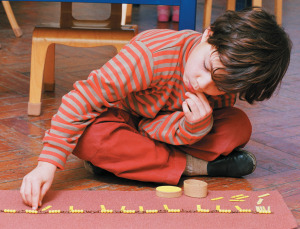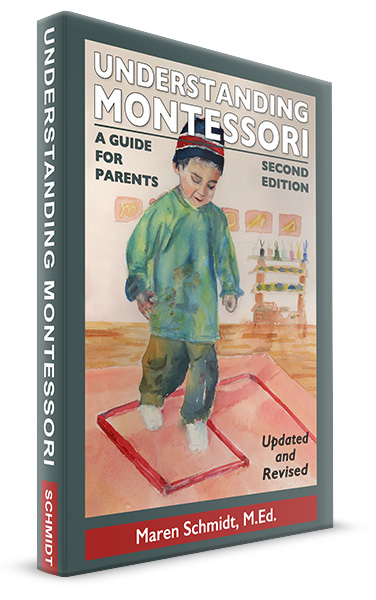
Between the ages of birth to four-and-a-half, children are in a sensitive period for refining their senses.
Children at this age are capable of learning to discern hundreds of qualities of the things around them. Perfect pitch is acquired before the age of six. Too often adults stop giving information after certain basics are mastered.
Take the names of shapes. When a child can identify circle, square and triangle, we tend to stop.
Keep going!
Show the shapes and names of other figures such as oval, ellipse, quatrefoil, curvilinear triangle, rectangle, trapezoid, rhombus, quadrilateral, pentagon, hexagon, heptagon, octagon, nonagon and decagon.
We can do the same for solid figures: sphere, cube, pyramid, rectangular prism, cone, ellipsoid, ovoid, triangular prism, tetrahedron. Shapes and figures are just the beginning of the qualities we can show children. Colors, tastes, smells, dimension, materials and sounds are all sensory information that can be explored and named.
To introduce new information, isolating a quality of an object makes it easier to learn.
Let’s look at introducing the words for sphere, cube and pyramid. In an ideal situation the figures would be made of the same material, be the same color, and be on the same size scale. This would isolate the quality of shape. Using a green five-inch wooden cube, along with a red vinyl beach ball, and a one-inch tall white plastic pyramid, will not isolate the unique quality of each figure. Instead, other qualities including size, color and material will be shown with the figure. Isolating one essential quality helps learning occur faster and with less confusion.
A few years ago I took an intensive language course in Spanish. How fast language sounds when you don’t understand! Spanish words came at me so quickly, I had to ask simple questions such as, “Is this a green chair?” because I didn’t understand which was more important, to get a chair or to get something green. I sympathize with three-year-olds. Fast and confusing language is directed at our children when so much is new. Isolating a quality took on a new importance for me when I was learning a new language.
To introduce new words, showing three things at a time seems to work well. Two items are not challenging enough and four can be too many.
A Montessori technique is the three period lesson. It goes like this:
First Period: Introduction
This is a circle. This is a square. This is a triangle.
Second Period: Show me.
Show me the triangle. Show me the square. Show me the circle.
We do many repetitions with the second period of the lesson, using a variety of expressions, such as: Put the circle in my hand. Place the triangle on the table. Carry the square to the chair.
Third Period: The Test
Point to the object and ask: What is this?
If the child knows it, add more information. If not, return to the second period of the lesson.
When working with children, remember that the main objective is to build a loving and trusting relationship. It is not about whether they can give you the right answer, right now.
If a child tells you a square is a circle, avoid saying “No! That is a square!” Be friendly with error. Put your finger near the circle and then say, “Show me the circle.” We want to assure success as we introduce new information to our children. It helps build trust and respect and thus true learning. Also, research shows that we remember new information best if it involves laughter. So have fun!
Sometimes we can do all three periods of the lesson in one session. Other times, it may be weeks between the first and third periods. Take clues from the look in your child’s eyes. Three or four minutes per lesson are probably enough. Stop before your child becomes frustrated.
Learning sensory language can help your child cope more easily. If your child is a fussy eater or has temper tantrums, he or she may be on sensory overload. To analyze what triggers the behavior, begin by looking at your child’s sensory environment. In the car, for example, music, engine noise, fabric textures, hot buckles, temperature changes, air circulation, smells or the inability to move may put a three-year-old, or any of us, on sensory overload before getting out of the driveway.
Instead of kicking the seat and screaming, with sensory language, your child may tell you, “Dad, the air conditioner is blowing into my eyes and freezing my eyeballs!”

